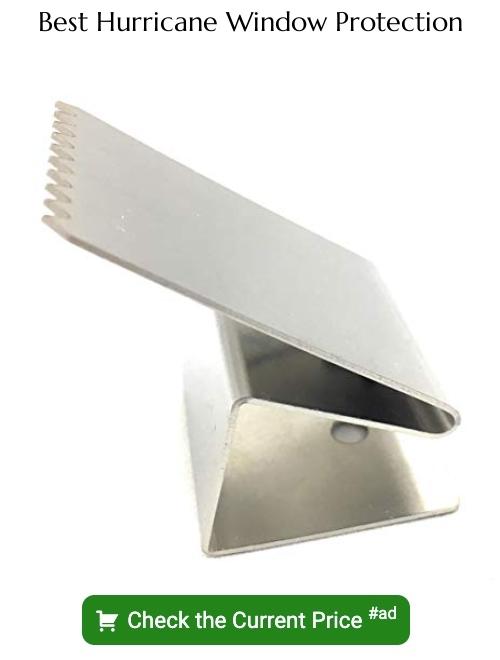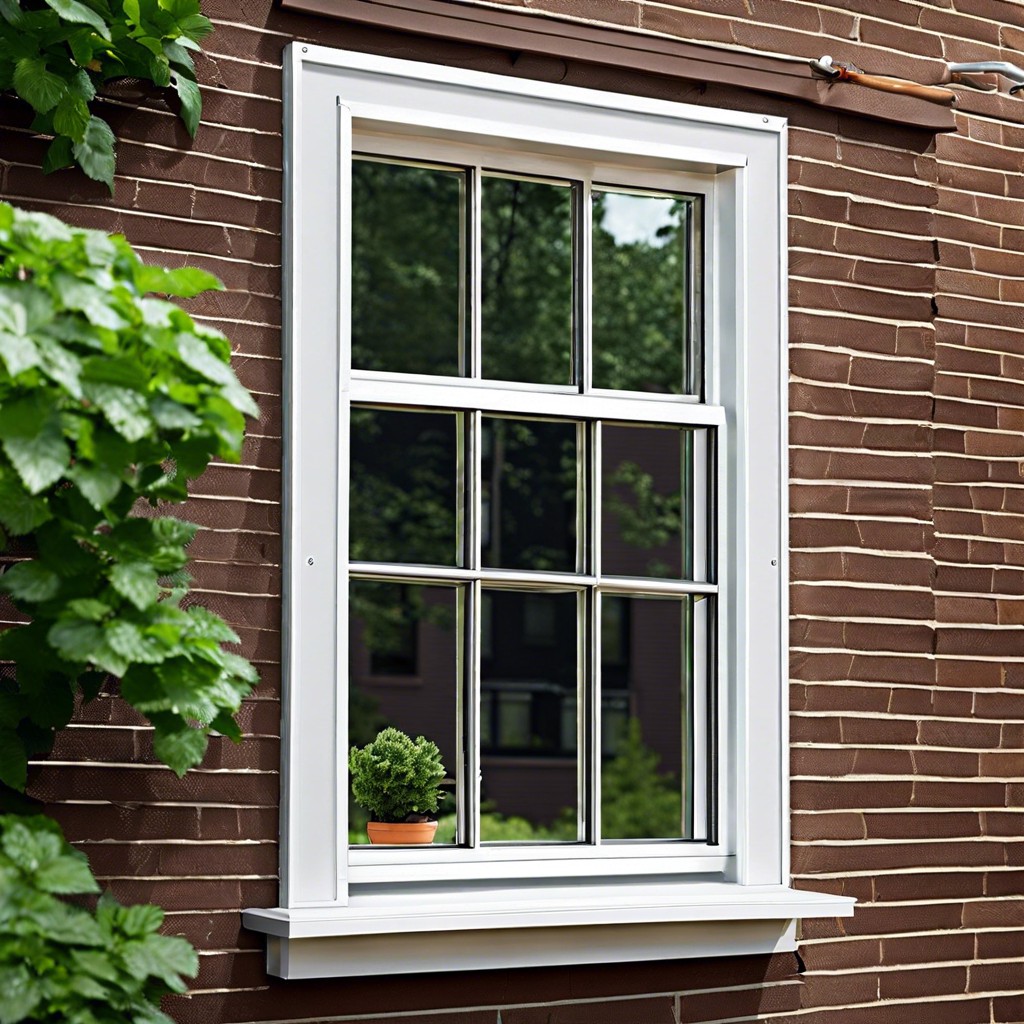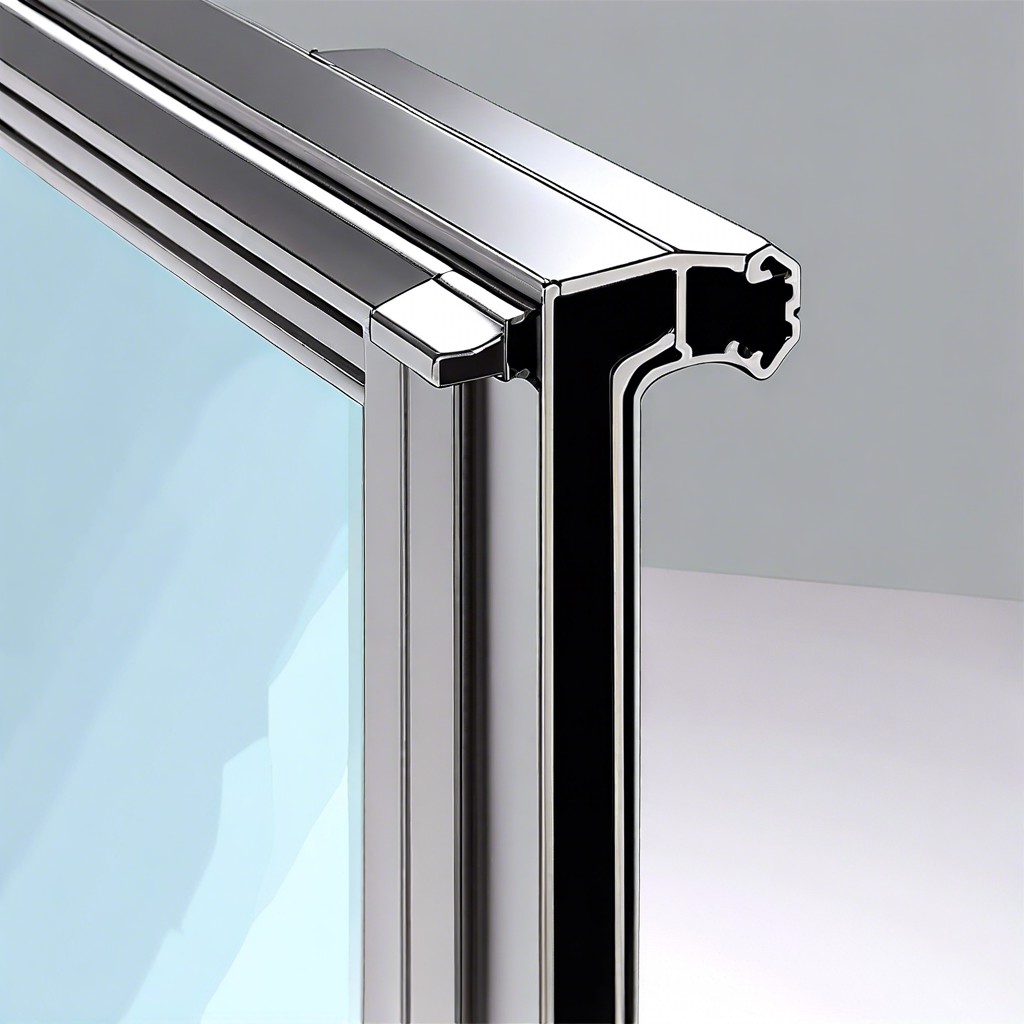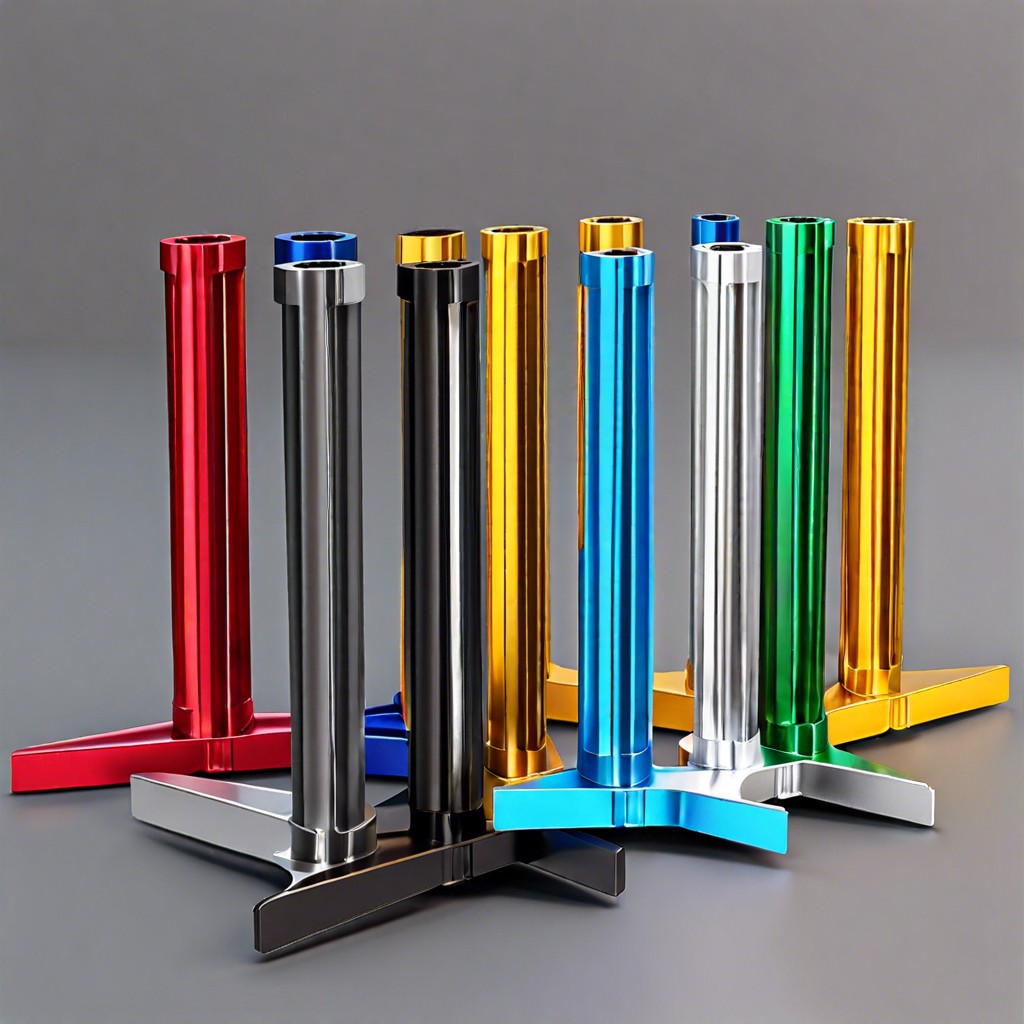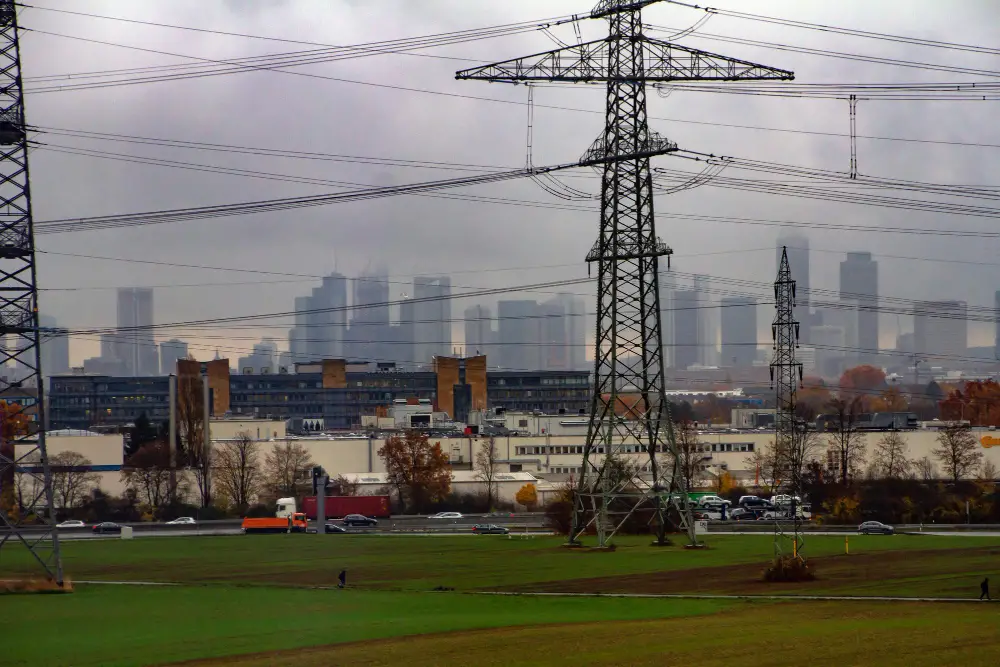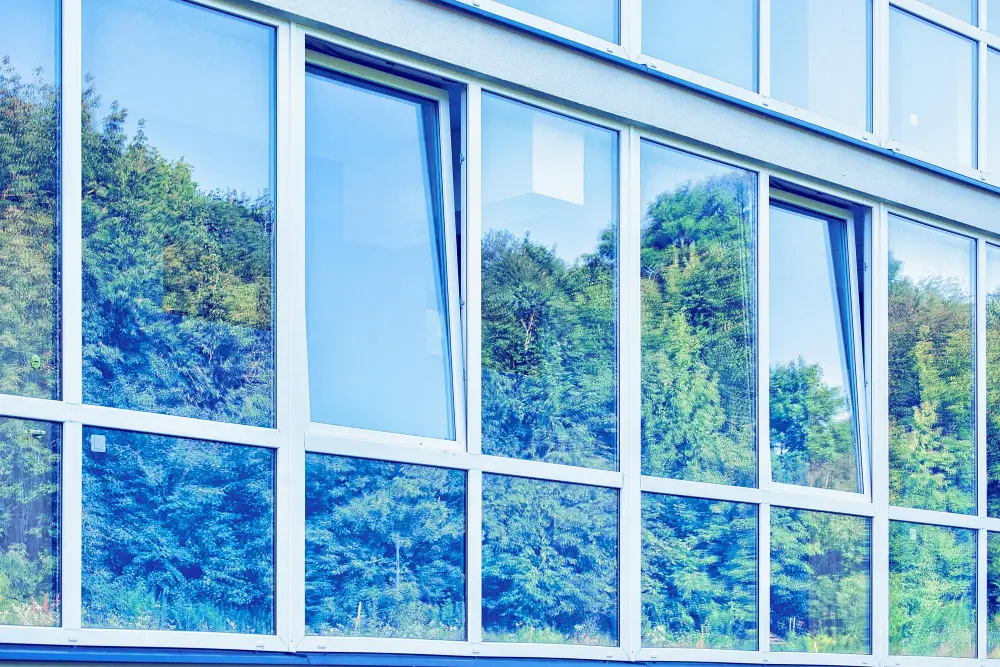Exploring the costs associated with hurricane windows can help homeowners make informed decisions about these vital home protections.
Hurricane windows, also known as impact windows, are a worthwhile investment for homes in storm-prone areas. Their cost varies depending on factors such as size, material, and manufacturer. Generally, they range from $40 to $55 per square foot, including installation. This might seem steep, but considering their durability, energy efficiency, and the protection they offer against harsh weather, they provide significant value.
This article will delve into the details of these factors, offering a comprehensive guide to understanding the costs associated with hurricane windows.
Key takeaways:
- Hurricane windows cost to per square foot
- Material options for hurricane windows include aluminum or steel, vinyl, and wood
- Aluminum and steel frames are durable, vinyl frames are energy-efficient, and wood frames offer aesthetic appeal
- Hurricane windows are designed to withstand high winds, flying debris, and water penetration
- Regions prone to hurricanes include the Atlantic and Gulf coasts of the United States, Hawaii, the Western Pacific, and the Indian Ocean
Types of Hurricane Windows
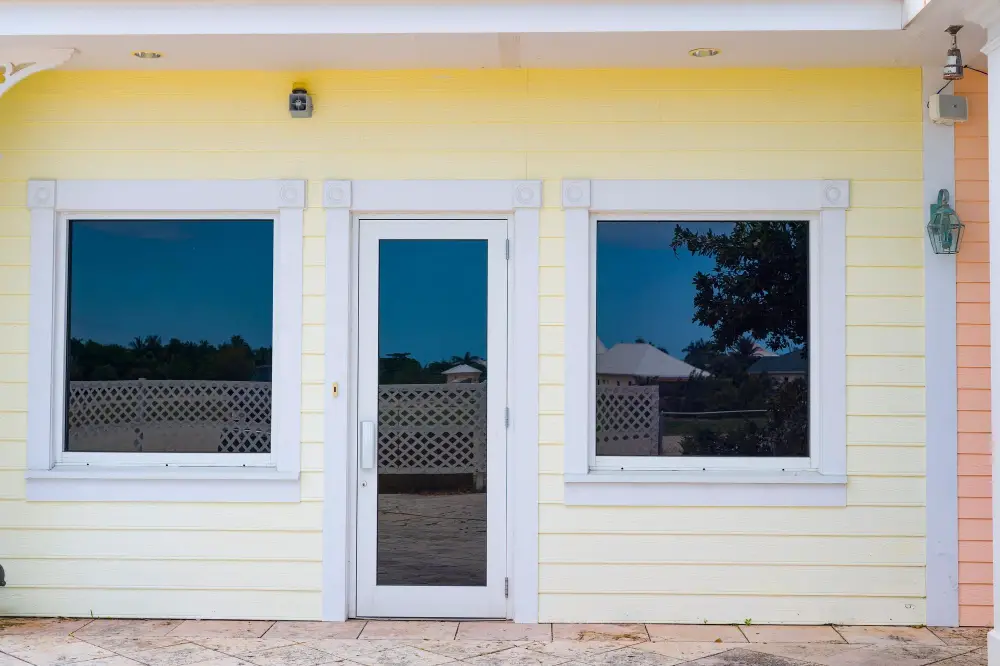
Primary types of hurricane windows are categorized according to the material used in their frames – aluminum or steel, vinyl, and wood.
Aluminum or steel framed hurricane windows are well-regarded for their strength and resilience. These windows effectively withstand high winds and flying debris due to their robust structure.
Vinyl framed hurricane windows, on the other hand, provide significant energy savings due to their insulative properties. They offer a level of resilience against hurricanes similar to their steel and aluminum counterparts, yet come with enhanced thermal performance to reduce heating and cooling costs.
Wood framed hurricane windows offer a traditional aesthetic appeal along with its protective features. While they generally require more maintenance than other types, many homeowners choose wood frames for their classic, warm, and inviting appearance.
Regardless of selection, all types of hurricane windows are designed and tested to meet stringent industry standards for wind resistance, debris impact, and water penetration.
When selecting a material, consider the surrounding environment, the local weather, and personal style preference. Balance these against the budget to make an informed decision.
Regular maintenance, including periodic check and cleaning, can enhance the longevity of hurricane windows. When undergoing any maintenance task, follow manufacturer guidelines to ensure optimal performance.
Aluminum or Steel Framed Hurricane Windows
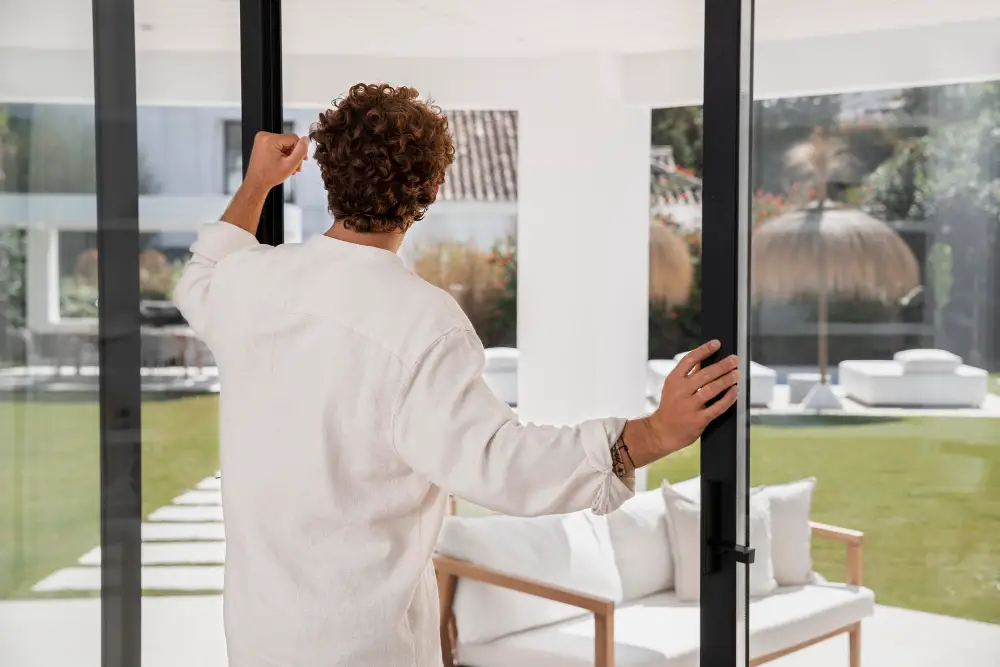
Aluminum and steel offer exceptional strength, which is key in regions prone to high-wind events. While both materials are highly durable, they differ in some aspects.
Aluminum, thanks to its substantial buoyancy, is quite resistant to pressure. It’s an excellent option for larger windows due to its rigid nature. On the downside, aluminum can be more prone to damage from salt air. So, it’s not the best choice for coastal properties.
Steel, on the other hand, is incredibly sturdy and less likely to give under hurricane force winds. It’s highly resistant to rust which makes it great for coastal homes. However, steel frames can be much heavier which may complicate the installation process.
Both options can be more expensive than other materials, but in exchange for greater peace of mind and durability, many homeowners find the extra cost justifiable.
These frames also require special, thicker glass panes. Standard windows use double strength glass, around 3/32” thick, but hurricane window glass needs to be at least 5/16” thick. The glass in these window frames is designed to stand firm even against debris propelled by hurricane-force winds.
With regard to maintenance, ensure that the windows are cleaned regularly and checked for signs of corrosion or damage. Minor issues are easier to handle before they become major problems.
When it comes to aesthetics, these frames come in various styles and colors to match your home décor. So, you need not worry about the practicality overshadowing the aesthetics.
Vinyl Framed Hurricane Windows
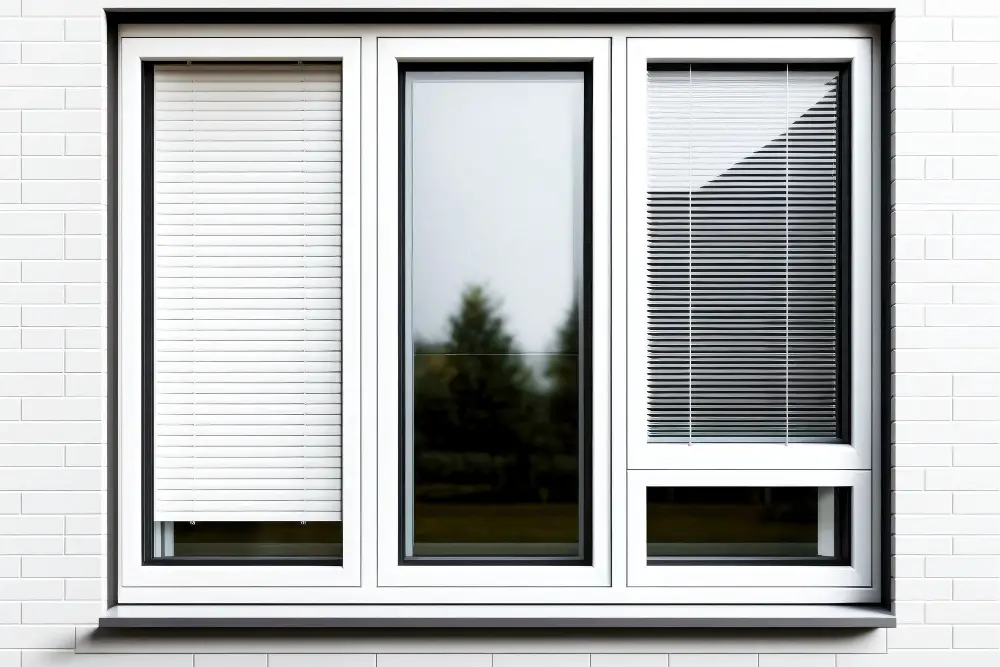
Vinyl framed hurricane windows have rapidly gained popularity due to their unique set of advantages. With a relatively low maintenance requirement, these windows are known for their resistance to rust, peeling, or flaking, which makes them a sturdy choice for hurricane-prone regions.
Key Ideas:
- Durability: Constructed from high-quality PVC material, vinyl frames offer impressive durability. They can withstand the brutal winds and debris associated with hurricanes without warping or cracking.
- Energy Efficiency: Vinyl is an excellent insulator, helping to keep your home warm in winter and cool in summer, potentially lowering your energy costs.
- Affordability: While prices vary depending on size and specific brands, vinyl frames are usually more cost-effective than their aluminum or wooden counterparts.
- Variety: Available in a wide range of colors and styles, vinyl offers homeowners the opportunity to complement their home’s architectural design without sacrificing on performance.
What to do next:
- Evaluate your budget: Since vinyl frames are generally cheaper, they might be a good option for those looking to install hurricane windows within a limited budget.
- Assess your home aesthetics: Check different styles and colors of vinyl frames available to see what matches your home design.
- Contact professionals: Once you’ve made your decision, reach out to window installation companies for quotes and installation services.
Remember to consider potential trade-offs. While vinyl frames are cost-effective and offer good insulation, they may not be as strong as aluminum or steel frames in extreme weather conditions.
Wood Framed Hurricane Windows
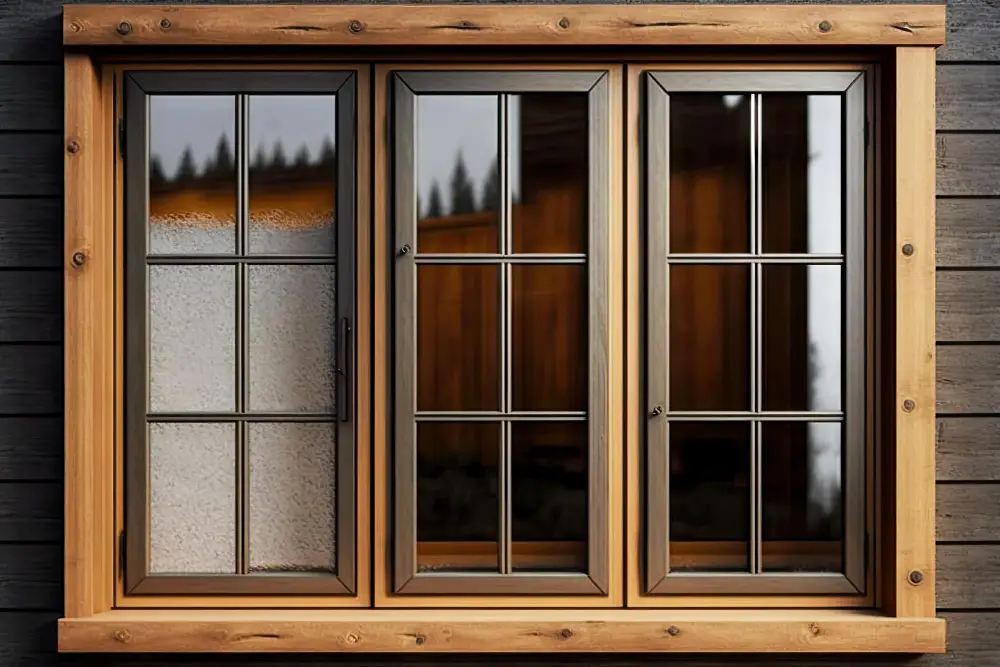
Wood framed hurricane windows are a popular choice for home owners. Benefitting from the natural aesthetic and insulation properties of wood, these windows also incorporate specialized glazing that can withstand high winds and flying debris. Despite their charming appearance, it is important to note there might be some downsides:
Wood frames generally require more maintenance than their metal or vinyl counterparts to prevent rot and preserve the appearance of the wood. Regular painting or sealing is often necessary.
While wood frames offer excellent insulation, they can sometimes struggle with moisture resistance unless treated correctly.
Typically, wood framed hurricane windows are more expensive than other hurricane window options due to the cost of the material and the work involved in the manufacturing process.
Installation of wood framed hurricane windows should be undertaken by a professional due to the specialized knowledge required for mounting and sealing.
For those considering this option, carefully weighing the aesthetic benefits against the maintenance requirements and higher upfront cost is key to making an educated decision.
What Regions Are Prone to Hurricanes?
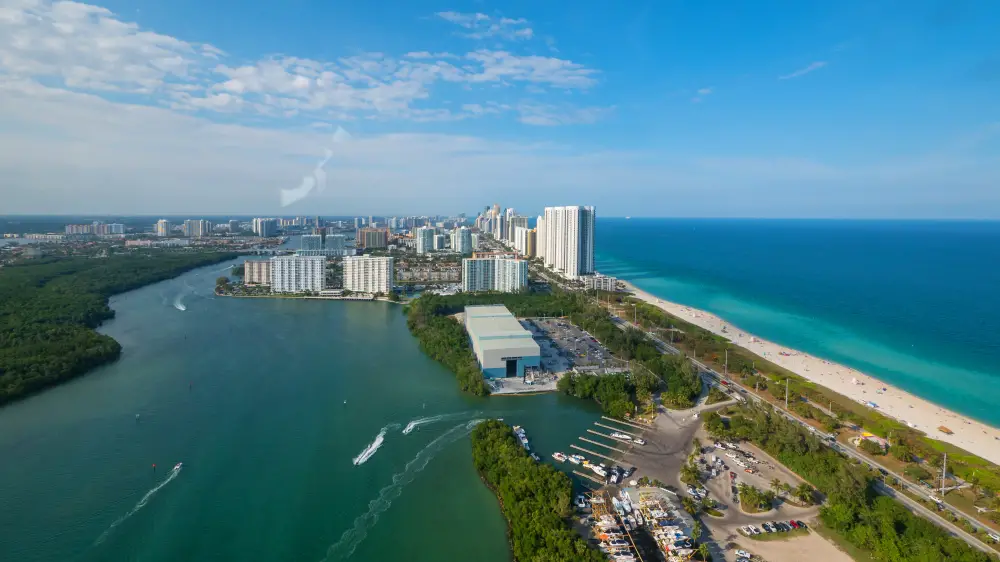
While hurricanes can occur in any coastal area, certain regions bear the brunt of these storms more frequently.
Primarily, the prime regions include the Atlantic and Gulf coasts of the United States, extending from Texas to Massachusetts. Weather patterns and warm ocean currents make this East Coast and Southern area particularly vulnerable.
In the USA, the top five most hurricane-prone states are:
- Florida, with its extensive coastline, experiences hurricanes on both the Atlantic and Gulf coasts.
- Texas, especially its Gulf Coast, is vulnerable due to its terrain and proximity to the warm waters of the Gulf of Mexico.
- Louisiana often experiences hurricanes that form in the Gulf of Mexico.
- North Carolina‘s eastern coast is a frequent landing spot for Atlantic hurricanes.
- South Carolina also sees regular impacts from Atlantic Hurricanes.
Globally, regions such as the Eastern Pacific around Hawaii, the Western Pacific, or Typhoon Belt, and the Indian Ocean’s cyclone-prone areas, are susceptible to strong storms equivalent to Hurricanes.
Understanding these regions’ hurricane proclivities should guide homeowners’ decisions about the necessity and type of hurricane window installation.
Do I Need to Install Hurricane Windows?

Installing hurricane windows is crucial if living in a region susceptible to hurricanes and severe storms. These highly durable windows are constructed to withstand strong winds and flying debris, always keeping safety in mind.
In hurricane-prone regions, building codes often require windows to meet certain specifications for storm safety. Insurance companies may provide discounts for homes with hurricane windows because they reduce potential storm damage.
Even if your home is not required to have these windows, consider installing them for the following reasons:
- Shield your home from wind, water, and debris damage during hurricanes.
- Increase the overall strength of your home, making your residence more secure.
- Better insulation for energy efficiency, resulting in lower utility bills.
- Improve residential soundproofing from outdoor noises.
- Protection against UV rays; special coating reduces fading on furniture, drapes or flooring caused by sunlight.
- Optimize property value, a helpful aspect in a highly competitive real estate market.
It is vital to consult with a professional installer to understand the full benefits of installing hurricane windows tailored to your specific needs.
How Much Do Hurricane Windows Cost?

The total cost of hurricane windows depends largely on several factors.
Initially, window materials play a crucial role in the overall price. Windows constructed from single-layer tempered glass will be more affordable than those with laminated glass or impact-resistant glazing.
The selection of frame materials also has significant impact on the cost. Naturally, common frames like vinyl are more cost-effective while aluminum or steel frames – though more robust – may increase the total price.
The dimensions of the windows can affect the final number too. Larger or custom-sized windows will be more expensive compared to standard-sized ones.
Brand choice can sway the cost as well. Top-tier brands known for superior quality and longevity may command higher prices.
Lastly, the labor costs, if you choose professional installation, need to be considered. Although you can install them yourself, it is recommended to hire professionals for this technical task.
Knowledge of these factors can empower homeowners to make informed decisions pertaining to the expense of hurricane windows, ensuring resilient and lasting protection for their homes without any unexpected financial surprises.
Factors That Affect Hurricane Windows Cost

Several elements directly influence the overall pricing of hurricane windows.
Window Materials: The chosen material for the window significantly impacts the price. Common choices include laminated glass, tempered glass, or a combination of laminated and insulated glass.
Frame Materials: The material of the window frame hugely affects the cost. Three common options are vinyl, aluminum, and wood. While vinyl is the most cost-effective material, wood costs the most due to its exquisite aesthetic and high maintenance requirements.
Size: The dimensions of the windows impact the overall cost, with larger windows being more expensive.
Window Brands: Different brands have various pricing scales, reflecting their reputation, quality of materials, and additional features offered. Premium brands charge more than budget-friendly ones.
Labor: The complexity, duration, and manpower needed for installation also contribute to the final price. Professional installation is more costly but guarantees a proper fit, which is essential for hurricane windows’ effectiveness.
Cost per Square Foot: The price of hurricane-resistant windows is often calculated per square foot, varying depending on the previously mentioned factors.
Additional Hurricane Impact Window Features: Additional features like energy-saving technology, UV protection, or decorative options can add to the final cost.
Remember that receiving multiple estimates from various manufacturers and installers can help ensure you achieve the best quality-to-price ratio.
Window Materials
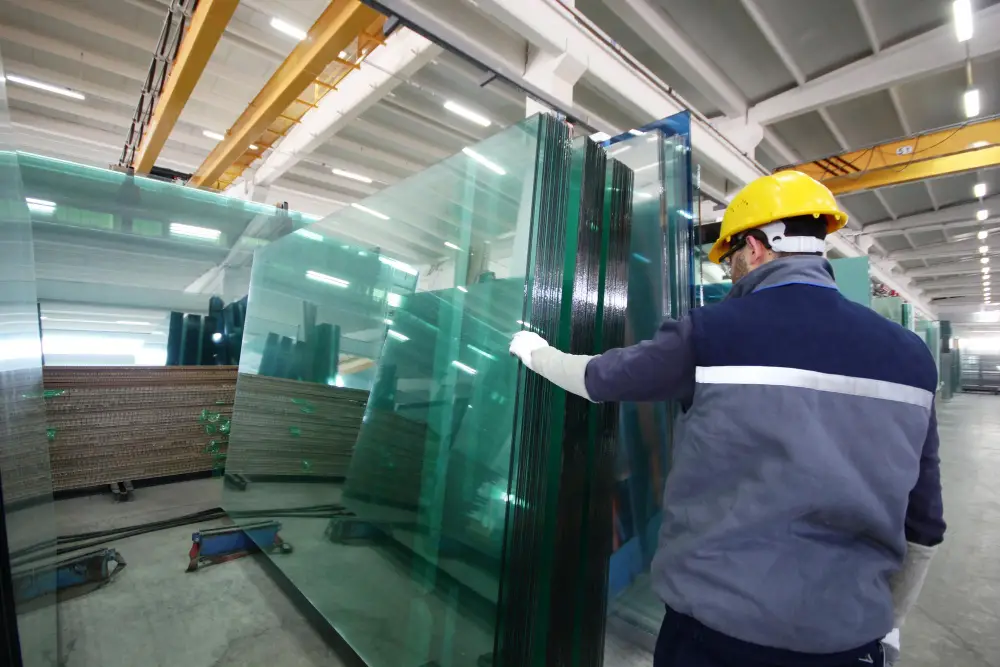
Different types of glass comprise hurricane windows. Here are the most common choices:
- Polycarbonate: A lightweight, durable material, this type of window not only provides protection against storm damage, but also offers significant ultraviolet light resistance. The strength of polycarbonate is so high that it is often used in bullet-proof glass.
- Laminated: These are made by sandwiching a layer of polyvinyl butyral (PVB) between two panes of glass, then sealing them together under heat and pressure. This results in a clear, strong layer of protection that stays intact even if the outer glass is shattered.
- Tempered: This is a type of safety glass processed by controlled thermal or chemical treatments to increase its strength. This ensures that when shattered, it will break into small granular pieces instead of splintering into jagged shards.
- Insulated: These windows offer superior energy efficiency by trapping a layer of air or inert gas between two panes of glass. This can often withstand hurricane-force winds.
Choosing the right window material could both provide storm protection and enhance energy efficiency or UV protection. Balancing the window material against cost and specific needs would best suit the homeowner.
Frame Materials
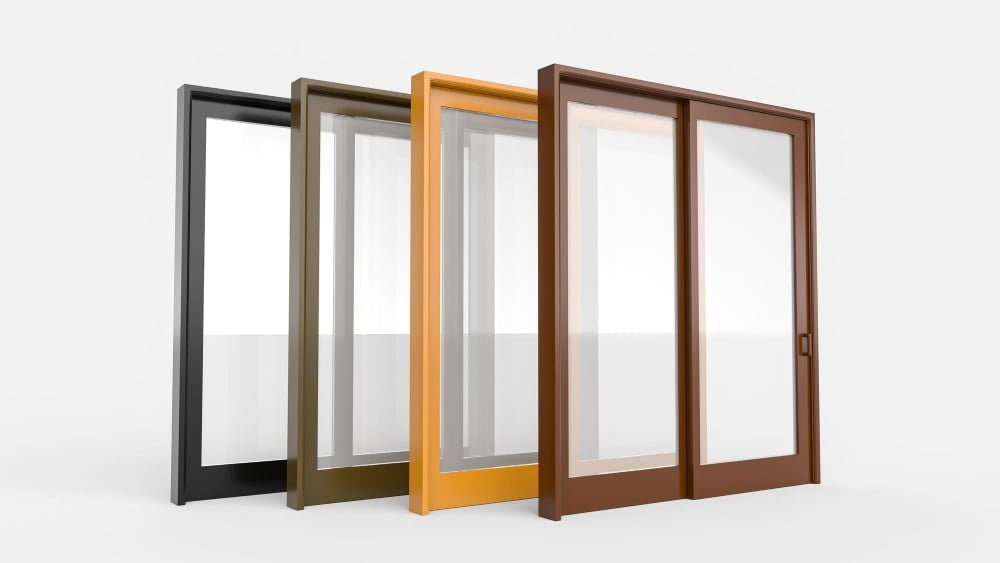
One factor that greatly impacts the overall cost of hurricane windows is the material used for the frame.
Aluminum or steel frames tend to be the most durable, especially when you live in areas that experience extreme weather conditions. They withstand harsh elements without warping or cracking, however, they are generally more expensive.
Wood frames offer an aesthetic appeal that many homeowners love. But remember, these types of frames require more maintenance and might not last as long during severe weather conditions. Despite this, their cost falls in the middle of the spectrum.
Vinyl frames perform fairly well in resisting wind and impact. They also need little maintenance and tend to be more energy-efficient. Most attractively for many, vinyl frames are often the most cost-effective option when looking to install hurricane windows.
Before making a choice, consider each material’s pros and cons thoroughly. They each fare differently in terms of cost, durability, maintenance needs, and aesthetic appeal.
Size
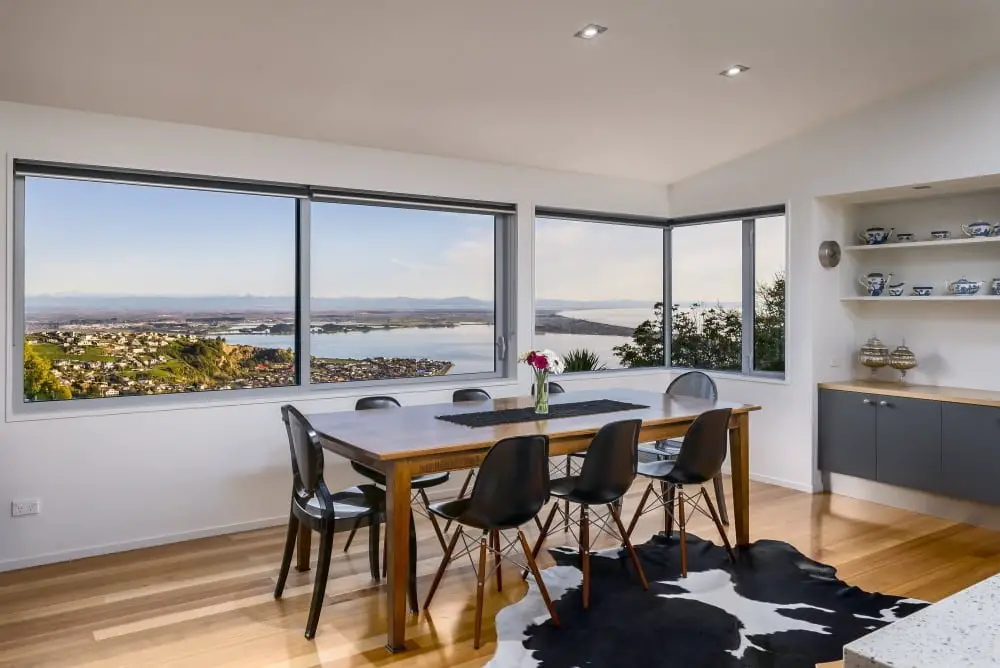
Size significantly influences the expenditure on hurricane windows. This is primarily due to the materials and work hours necessary for larger windows. Custom shapes or dimensions may incur additional costs as well.
Before buying hurricane windows, accurate measurements are paramount. Always double-check measurements to avoid errors. Remember:
- Width is measured from the inside of one jamb to the inside of the opposite jamb.
- Height is determined by measuring from the bottom surface of the sill to the top of the window opening.
- Depth does not have a standard value and may vary by manufacturer.
Another aspect to consider is the number of panes in the windows. More panes can provide increased insulation and protection but will also elevate the price.
Lastly, consider window placement. If a window’s located in an inaccessible or hard-to-reach area, it might require professional installation, adding to the total cost.
Window Brands
Renowned hurricane window brands largely determine their price due to their quality, reputation, and warranty coverage.
Pella is known for its innovation and variety in window styles. One might pay a premium for Pella hurricane windows due to their advanced features like the option of built-in blinds.
Andersen, another reputable brand, offers high-end wood and vinyl windows recognized for their durability. They offer warranties that give homeowners peace of mind.
PGT creates custom aluminum and vinyl windows designed for maximum hurricane protection. They also offer energy-efficient options that can help homeowners save on utility costs.
Simonton focuses on cost-effective vinyl windows that provide excellent hurricane protection without breaking the bank. Their windows are popular among budget-conscious homeowners seeking storm protection.
When choosing a brand, consider factors such as budget, aesthetic preference, and desired level of hurricane protection. Look into each brand’s warranty policy to understand what is covered, as this can also impact overall cost. Consider consulting with a professional to ensure you make the best choice for your needs and location.
Labor
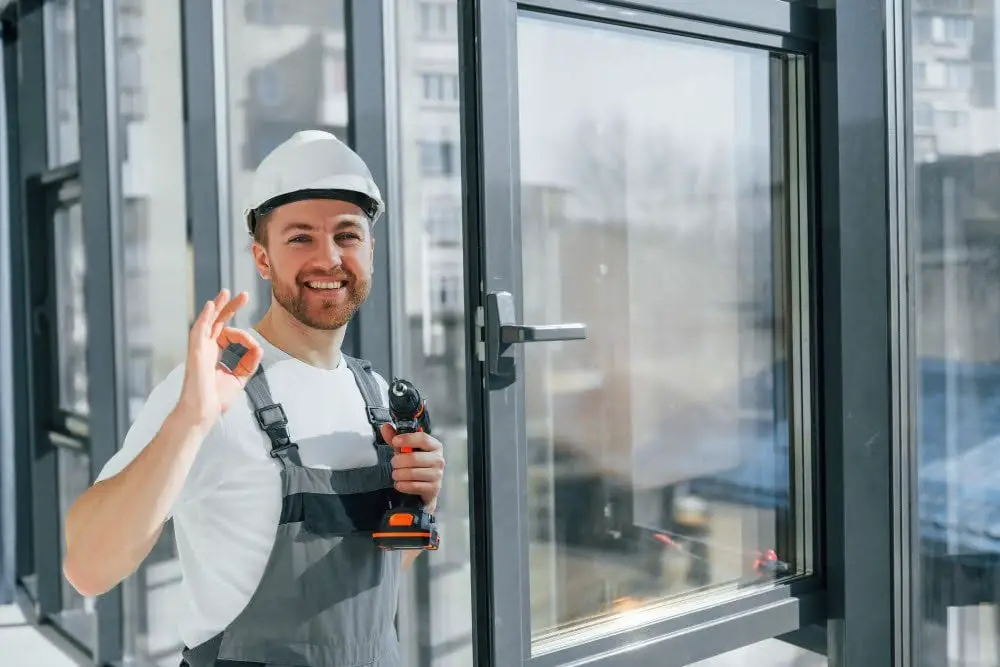
The cost of labor usually involves a significant portion of the overall hurricane windows installation cost. It can vary widely depending on a few key factors.
Hiring a Professional: Although you’ll pay more for their expertise, a professional can typically install windows more quickly and ensure the job is done right. This is often a smart investment to ensure your hurricane windows serve their purpose.
Window Size: Larger, heavier windows require more time and manpower to install, which will increase the labor cost.
Location: The cost of living in your area, as well as local demand for professional installers, can both impact the price you’ll pay.
Installation Complexity: If your windows have complex shapes or your home has unusual architectural features, the installation could require more effort and thus more labor costs.
Preparation Work: In some cases, there may be need for additional prep work like removing old windows or making adjustments to your home’s window openings to accommodate the new windows. This additional work adds onto the labor cost.
Remember, while it might be tempting to save on labor cost by trying to install hurricane windows on your own, this is typically a job best left to professionals due to the high level of precision necessary for them to function effectively. Always have a professional installation quote in the total budget when considering the cost of hurricane windows.
Cost Per Square Foot
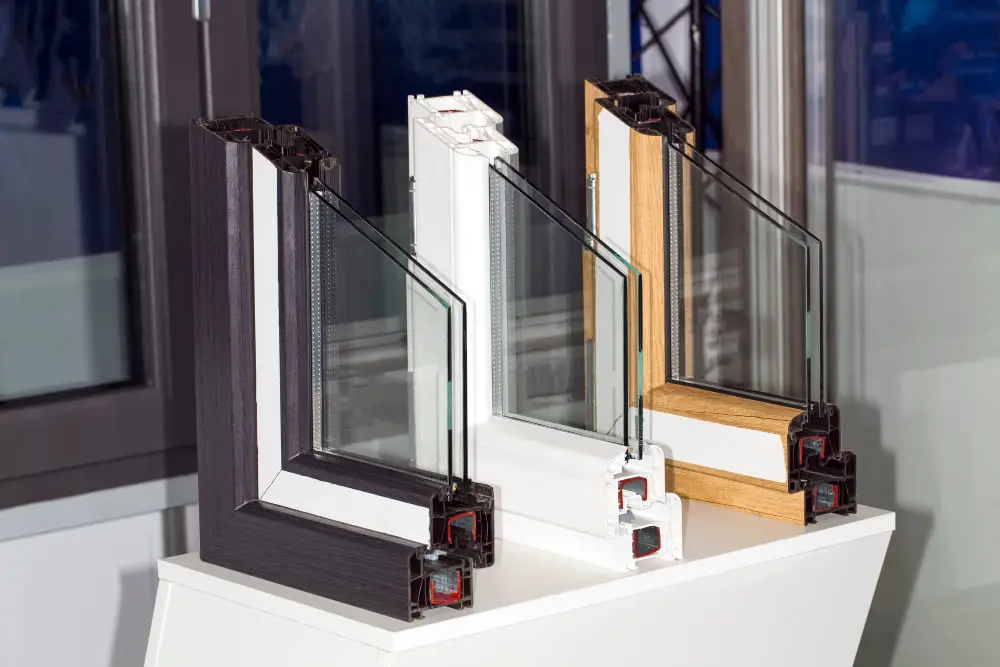
The price of hurricane windows varies widely, depending on factors such as material and quality. For a general idea, prices can range from $25 to $75 per square foot.
Considering the type of glass, a dual-pane window provides better insulation and typically costs more than a single-pane window.
The type of glass treatment can also affect the price. Laminated glass, which has a plastic inner layer for enhanced durability, is a bit more expensive.
When selecting your window, it’s beneficial to consider long-term cost efficiency. While high-performance windows are a larger initial investment, they can save you money on energy bills over time.
Remember to factor in the cost of labor, which is typically not included in per-square-foot costs. An experienced professional installer can ensure your windows are fitted correctly to provide the most protection.
Check with local suppliers or home improvement stores for pricing, or consult a contractor who specializes in window installations. Different vendors might offer discounts or package deals, thus enabling you to save some costs.
Make sure to inspect the warranty details before purchasing, as this could affect long-term costs if replacement or repairs are needed.
High-Impact Window Prices By Size
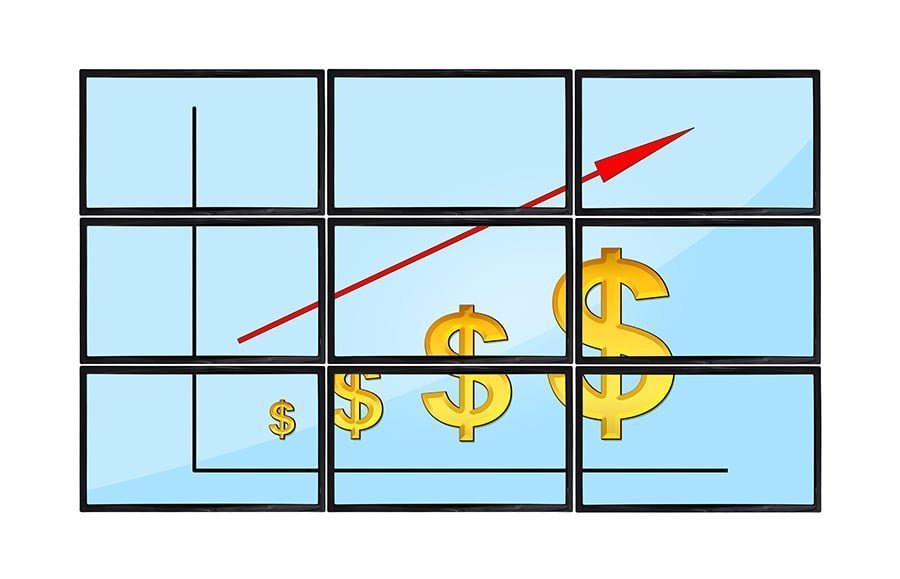
Typically, smaller windows such as those for bathrooms or basements, sized about 2×3 or 3×4 feet, will range anywhere from $300 to $500 each.
Standard single-hung or double-hung windows, approximately 3×5 to 4×6 feet, stretch in price from $500 to $700 per unit.
For larger picture windows, measuring around 4×6 to 6×6 feet etc., you could expect the cost between $1,200 to $3,000 each.
Factors contributing to this cost variation include the type of glass, the design of the window, and the manufacturer.
High-performance glass, such as laminated glass or low-emittance (Low-E) glass, may add to the expense, as can designer features like beveled glass or custom grids.
Consider the cost escalation with the increase in size; it’s not always linear.
Enhanced features for larger windows, such as an additional pane or reinforcements for the frame, may increase costs disproportionately to the size.
If purchasing multiple windows, check with the supplier or the installer about possible discounts.
Providers often offer a lower price per window when multiple units are purchased at the same time.
Finally, remember the cost of installation.
Depending on the complexity of the installation and the hourly cost of labor in your area, the price to install each window can range from $150 to $800.
Remember, these are rough estimates.
For more precise pricing, it’s advisable to get at least three quotes from different providers.
Additional Hurricane Impact Window Features and Cost

For those seeking extra resilience and functionality, several add-on features are available for hurricane impact windows. These enhancements will often increase the overall cost.
Energy-Efficient Coatings: These prevent excessive heat absorption and help reduce energy bills. While adding cost upfront, they’ll save money in the long run with lowered energy consumption.
Impact-Resistant Glass: Layered with a sheet of polyvinyl butyral (PVB) between two slabs of glass, it withstands high winds and flying debris, even if broken. A pricier option, but a must-have for extreme weather zones.
Laminated Insulated Glass: A combination of laminated and insulated glass delivers excellent energy efficiency and noise reduction, though at a higher price point.
Custom Design: A unique style or shape will require custom cuts which will increase the cost.
Reinforced Frames: Upgraded frames fabricated with durable materials like aluminum or steel can withstand stronger winds and offer better support for impact-resistant glass, but they also increase the cost.
Installation Extras: Some homes may require additional prep work before window installation, such as repairing wall damage or removing old windows, which will add to your project budget.
These features, while optional, can significantly enhance your hurricane windows’ performance. However, they will increase the overall investment, so it’s important to consider your needs, location, and budget.
Cost of Installation

Installing hurricane windows is a considerable expense, but it is essential to view it as a long-term investment. The cost varies greatly depending on several factors:
- The size of the window: Larger windows require more material and labor, hence cost higher.
- The type and quality of the window: Top-of-the-line options like double-glazed hurricane windows are naturally more expensive.
- Who fits the window: Professionals charge for their expertise. Rates depend on their reputation, location, and whether they’re certified installers.
- Geographic location: In certain areas, permits might be required which could add to the cost.
To make this project more manageable financially, focus on high-risk areas of your house. This approach is called “hardening the shell”. Begin with windows that are most directly exposed to harsh weather. Consider hire a professional for accurate cost estimates. Remember, skimping on installation could result in improperly installed windows, potentially causing you more in the long run.
Lastly, it’s crucial to investigate if your home insurance offers any discounts for installing hurricane windows. This could help offset the initial installation cost.
Professional Hurricane Window Installation
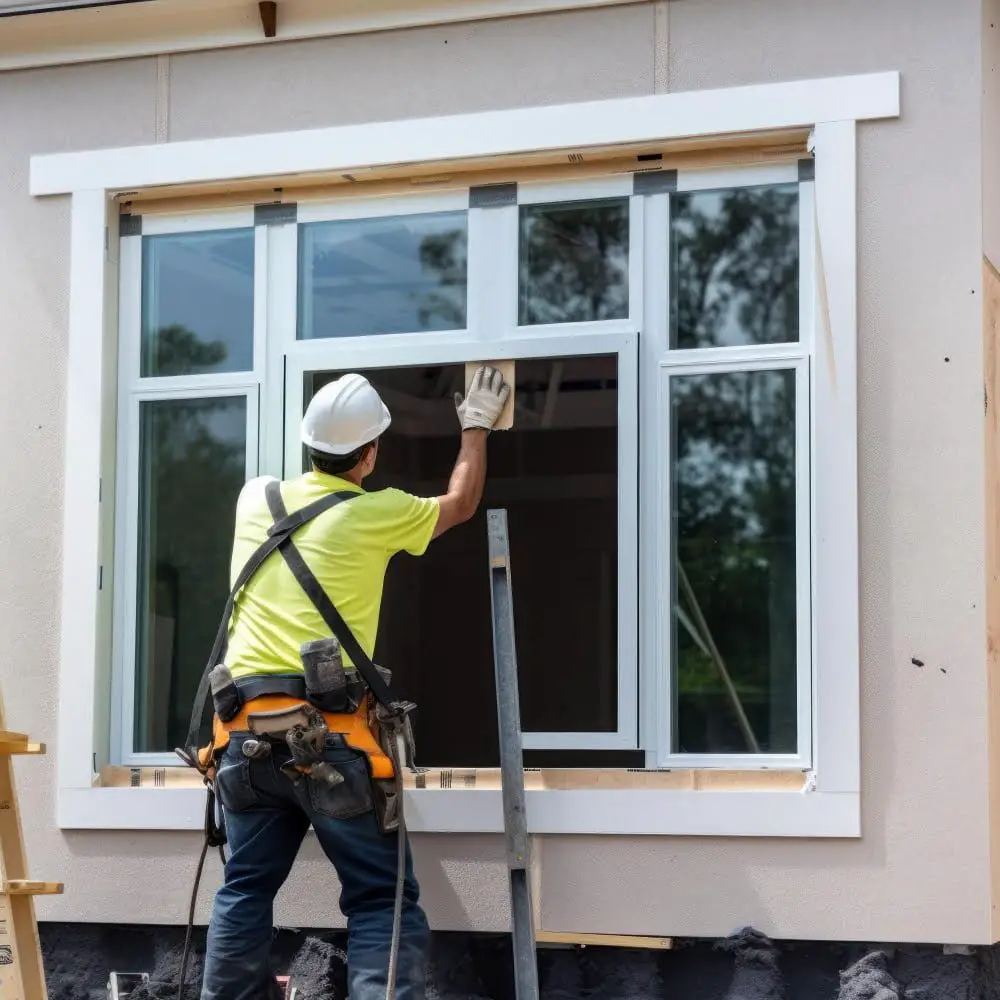
Securing the services of a professional for your hurricane window installation guarantees a seamless and error-free process. They come equipped with extensive experience and technical know-how to handle the installation effectively.
Here are key elements involved in this option:
Assessment and Measurement: Professionals begin the process by taking accurate measurements of your window spaces. This precise calculation prevents the risk of ill-fitting windows, and ensures the unit’s performance during harsh weather conditions.
Quality Assurance: With a professional installer, you benefit from their industry knowledge and access to the best quality hurricane window materials. They can guide you to products that provide the ideal balance of durability, versatility, and aesthetics.
Ensuring a Perfect Fit: The success of hurricane impact windows lies in their installation. Professional technicians are meticulous in securing windows into place, ensuring an airtight fit that mitigates air leakage and drafts.
Addressing Legal Requirements: There are specific building codes determined by local jurisdictions that should be adhered to, especially in hurricane-prone regions. Professionals are well-versed in these regulations and will ensure your installation is fully compliant.
Cleanup: Post-installation cleanup can often be a challenging task. A professional service typically includes cleanup in their package, taking the hassle away from you.
Remember, any attempts to save funding by opting for DIY could end up costing you more in the long run if the installation is not perfect. The peace of mind, knowing your home is effectively protected, makes professional installation a worthwhile investment.
DIY Hurricane Window Installation
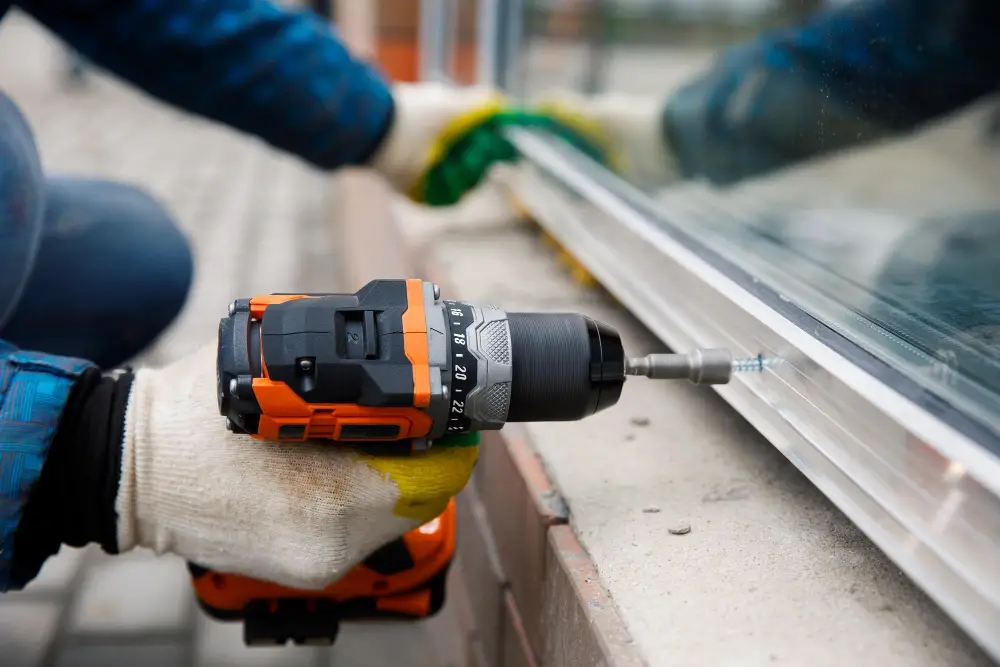
While opting for a professional installation service ensures the process is carried out to perfection, adventurous homeowners might prefer a DIY approach to installing hurricane windows. A few pointers will help in making this project successful:
First, wear protective gear. Safety should be your top priority, so always wear gloves, eye protection and sturdy shoes.
Invest in the right tools: a power drill, a level, window shims, caulk, screws, and a tape measure are essential.
Measure before you buy: To prevent any issues, ensure you measure multiple times before ordering your window. Remember, it’s better to err on the side of caution.
Removal of the old window: With care, remove the old window and any leftover debris or screws. This helps create a clean space for the new hurricane window.
Install frame: Install the window frame into the opening, ensuring it’s perfectly horizontal with the help of a level.
Add shims: Use shims to make sure the window is centered in the opening. Remember to check the window is still level after each adjustment.
Securing window: With the window level, secure it into place, starting from the top and working down. Use screws that are appropriate for the frame material.
Final touches: Apply caulk around any cracks or gaps to ensure a waterproof finish.
Taking on DIY hurricane window installation can save you a considerable sum on labor costs. However, remember to balance this against potential issues if the window isn’t installed correctly, as this can diminish the effectiveness of your hurricane window.
How to Save Money On Hurricane Windows
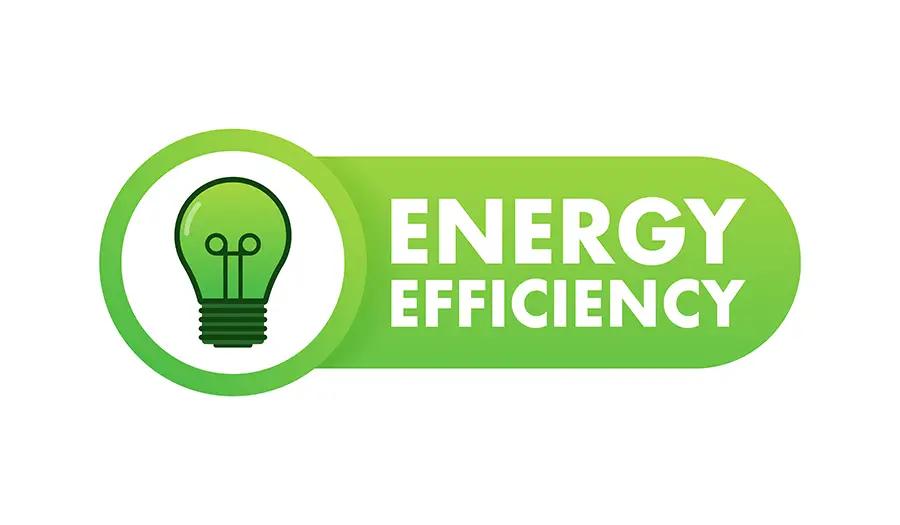
Invest in energy-efficient options. This might mean a higher upfront cost, but energy-efficient windows can reduce your utility bills over time and potentially grant you tax credits.
Consider purchasing in off-peak seasons. Window installation companies typically offer discounts during their slower periods.
Look for manufacturer rebates or specials. Some manufacturers run promotions to attract customers. These can sometimes save you considerable amounts.
Opt for standard sizes. Buying custom-sized windows can drive up costs. If your window openings can accommodate standard-sized windows, you’ll likely save money.
Hire a reputable professional for the installation. Prevent unnecessary repair costs in the future by getting the job done right the first time.
Research multiple vendors. Explore quotes from various sources to ensure you’re getting a fair price.
Take time for maintenance. Regular upkeep can help prolong the lifespan of your hurricane windows, preventing the need to replace them prematurely.
Benefits of Installing Hurricane Windows
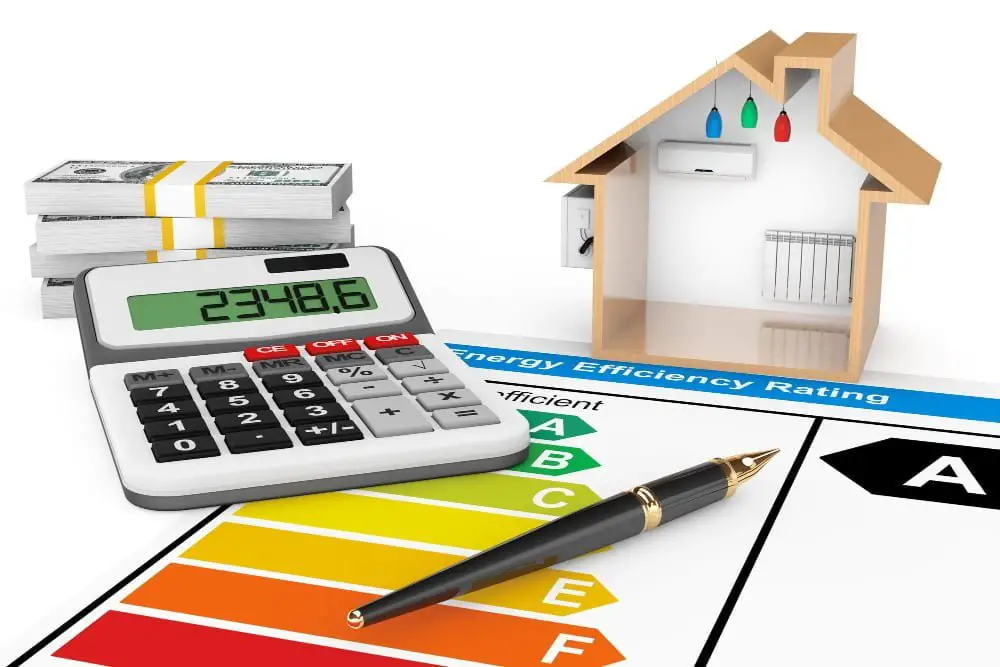
Besides providing a vital line of defense against high winds and flying debris, hurricane windows also offer a host of other advantages.
They enhance energy efficiency, reducing energy costs by effectively regulating indoor temperatures.
No need for cumbersome, time-consuming hurricane shutters. With these windows installed, your home becomes hurricane-ready at a moment’s notice.
These specially designed windows, apart from protecting your home, inherently minimize outside noise offering a quieter, more peaceful indoor environment.
While providing superior protection from extreme weather, they also deter theft and forced entry improving overall home security.
An overlooked benefit, yet significant, is insurance discounts. Many insurers offer a reduced rate for homes equipped with hurricane windows due to their high resistance to potential damage.
The additional UV protection provided by this type of window safeguards your beloved home interior from harmful sun rays, increasing the life of furniture and decor.
Finally, they arguably raise property value. Visual appeal coupled with powerful functionality makes them an attractive feature for prospective home buyers, if and when you decide to sell your home.
To reap all these benefits, select a licensed professional installer who is competent in this niche field. Only a correctly installed hurricane window can ensure the optimal performance of the product.
Storm Protection
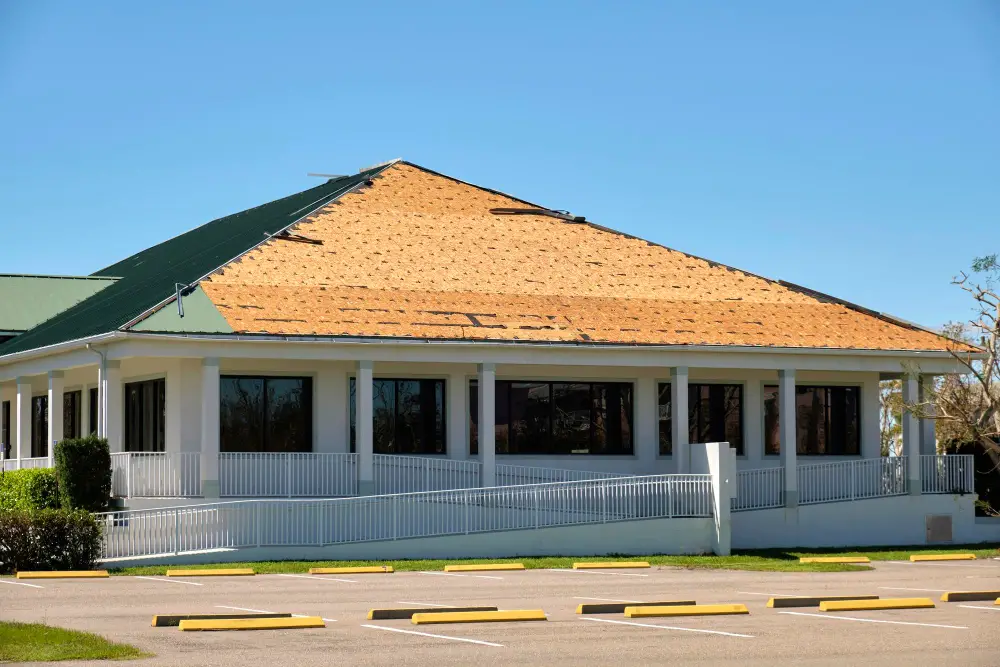
Hurricane windows, also known as impact windows, are specially designed and tested to withstand high-speed winds and flying debris. A key feature of these windows is their construction; they are made of two glass panes with a layer of rigid yet flexible material sandwiched in between.
- Durability: As one of the defining traits of hurricane windows, they are built to endure without shattering even when faced with great force.
- Multi-layer protection: The intermediary layer is a type of transparent plastic directly responsible for stopping debris from tearing through the window.
- Noise Reduction: While their primary function is to protect from storms, these windows also have the added bonus of dampening external noise.
- Protection against UV light: Hurricane windows are usually treated to block out harmful UV rays which can protect internal furniture, flooring, and fabrics from fading.
- Energy efficiency: These windows help regulate internal temperatures by reflecting heat, helping to lower heating or cooling costs.
- Insurance benefits: Some insurance companies provide discounts to homeowners who take steps to weatherproof their homes. Hurricane windows could qualify for these discounts. Therefore, while there’s an up-front cost to purchase and install these windows, they could end up saving money in the long run.
- Building code compliance: In some hurricane-prone regions, it’s mandatory to have these types of windows installed. Even if it’s not required in your area, such windows go a long way in maintaining a safe and secure environment during extreme weather conditions.
Noise Reduction
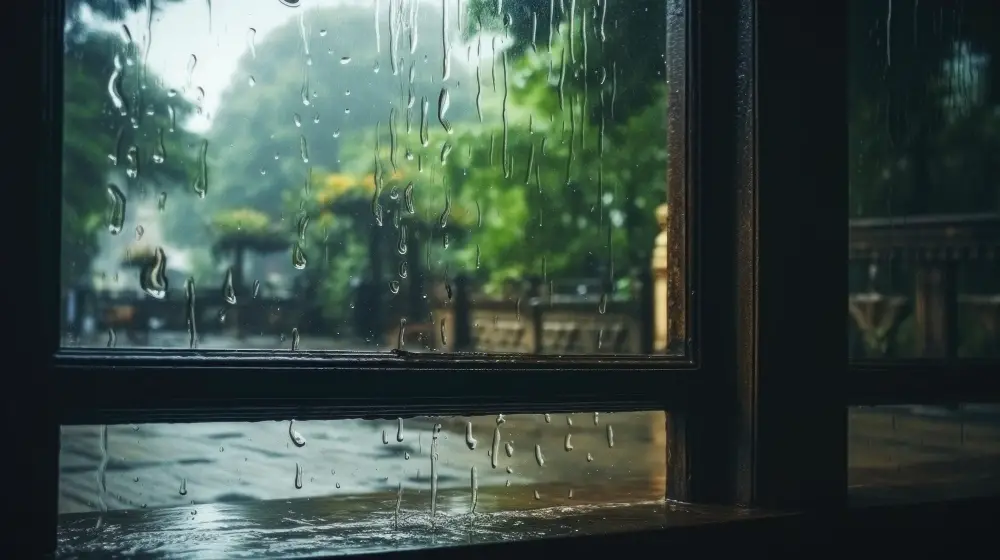
Hurricane windows not only provide protection during violent storms, but also significantly reduce external noise. Their unique construction makes them ideal for those living in noisy neighbourhoods or busy streets.
These windows consist of a layer of polyvinyl butyral (PVB) sandwiched between two pieces of glass. This combination creates an effective barrier against noise, as PVB is an excellent sound insulator.
The level of noise reduction depends on different factors:
- Thickness of the Glass: Thicker glass panels are better at dampening sound waves.
- Type of Installation: Soundproofing qualities can be influenced by the installation process. Proper sealing is crucial for maximum noise reduction.
- Distance between the Layers: Greater distance between the layers of glass can help to impede more sound waves.
To gain the benefits of noise reduction, consider these actionable steps:
- Evaluate the noise level: If your residence is exposed to high levels of noise, hurricane windows may be a worthwhile investment.
- Get professional advice: Consult with a window professional to determine the best specifications for your needs.
- Choose a reputable company: Ensure that your hurricane windows are sourced from a manufacturer renowned for quality and are installed by professionals.
Remember, the right hurricane windows can help to create a peaceful indoor environment, regardless of the noise happening outside.
One-Time Installation
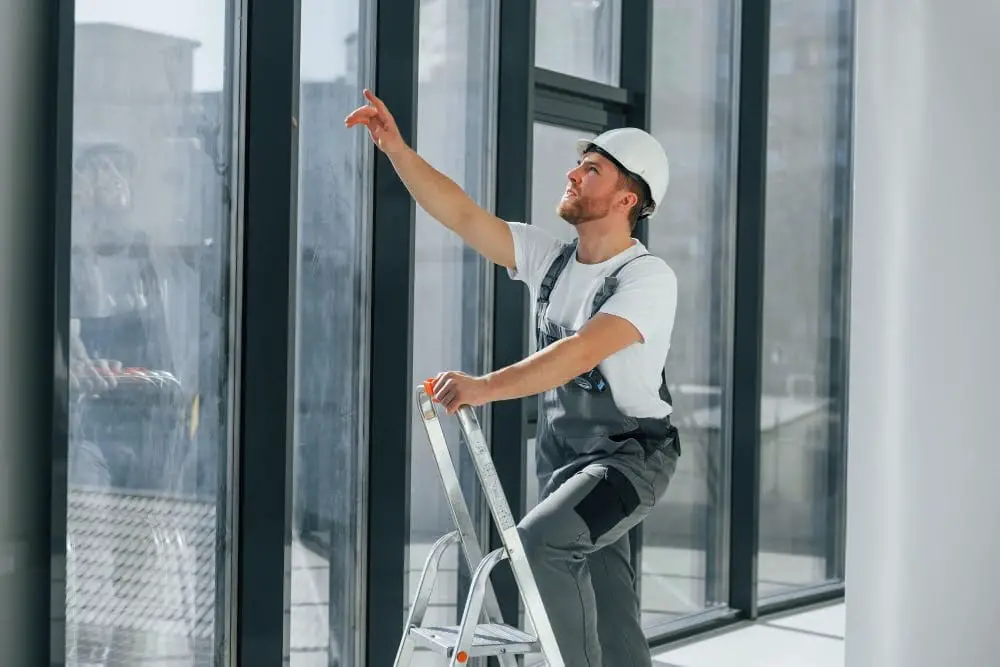
Installing hurricane windows often requires a one-time process, meaning once they’re installed, they might not need to be replaced or upgraded for many years. This duration can extend up to two decades and beyond, depending on how well they are maintained. This aspect makes it an effective long-term investment for homes in hurricane-prone areas.
Key aspects include:
- The durability of the hurricane windows, thanks to their impact-resistant glass and sturdy frames, ensure a long lifespan.
- High-quality installation by professionals guarantees they’re securely set. This strong foundation contributes significantly to the longevity of the windows.
- Despite the upfront cost, the longer lifespan means saving on periodic replacements, lowering the overall cost in the long haul.
- Regular maintenance helps to identify and fix minor damages early, extending the durability.
- Most hurricane windows come with a warranty that can cover damages over time, offering homeowners peace of mind in their investment.
Average Cost to Install an Impact Window

The average price for installing a single impact window largely depends on the window type and size. Typically, homeowners can expect to spend between $700 and $1,000 per small to medium-sized window. Keep in mind, this range includes labor costs which could vary based on region and installation complexities.
If you’re considering larger, custom-sized windows, these may run anywhere from $1,000 to $3,000 each, again inclusive of professional installation. For a whole house, that typically includes around 10 windows, the average cost ranges between $10,000 to $20,000.
Remember that prices can fluctuate based on several factors:
- Existing Window Removal: The challenges and efforts needed to uninstall your old windows can add to the labor cost.
- Customization: Any level of personalization, like custom shapes and colors, can increase the cost.
- Urgency: If the job is rush-ordered, professionals may charge extra fees.
- Installation complexities: Every home is unique, and unexpected issues may arise during installation which can add to the overall cost, like the need for new window frames, or addressing rot or mold.
While the upfront cost may seem steep, remember that impact windows offer extensive cost benefits in the long term through improved home security, possible insurance discounts, energy-efficiency, and increased property value.
Are Impact Windows the Same As Hurricane Windows?
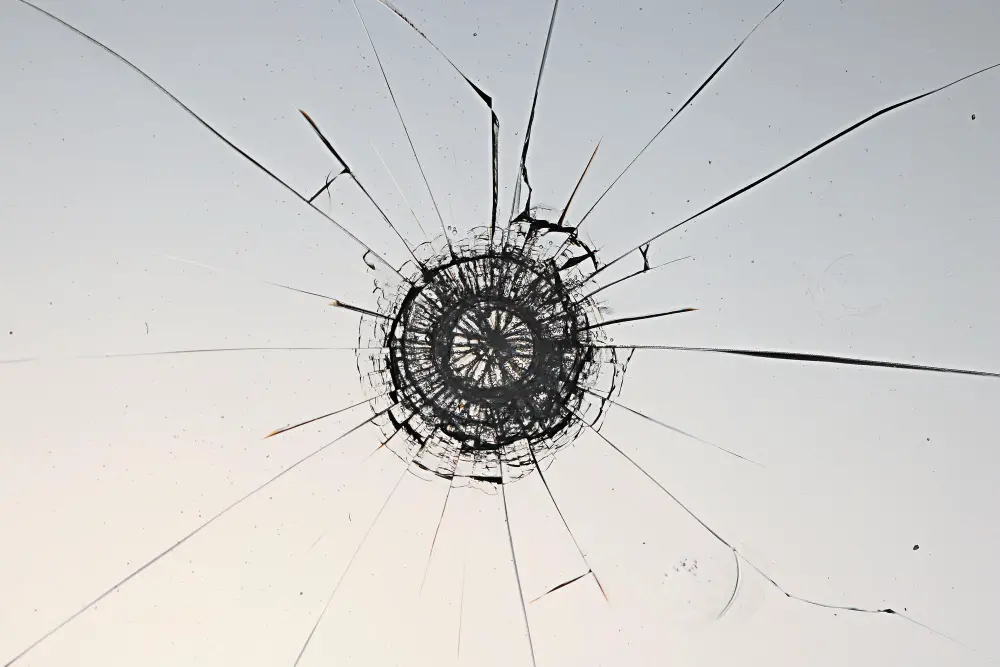
Yes, impact windows and hurricane windows are in fact, the same. They are designed and built to endure severe weather conditions, particularly strong and damaging winds.
Here are the key concepts involved:
- The main characteristic of these windows is their ability to resist shattering upon impact. They consist of two layers of glass or other transparent material, with a tough plastic layer in between.
- When something strikes an impact window, the outer layer may crack, but the inner plastic layer keeps the pieces together and prevents them from being hurled into your home.
- These windows are also built to withstand changes in pressure. This makes them a crucial addition to homes in regions prone to hurricanes. Rapid changes in pressure during a storm can cause windows to blow out, but the sturdy design of impact windows prevents this.
- Installing hurricane or impact windows is an investment in your home’s safety. It protects not just your windows, but keeps the whole structure of the house safer during a hurricane.
Keep in mind that these windows require professional installation to ensure they are effective. The intent is to not only protect your home from potential damage but also to possibly lower your homeowner’s insurance, depending on your provider’s policies.
How Much Do Hurricane Windows Typically Cost?

The cost of hurricane windows varies, largely depending on several factors such as the window and frame materials, size, brand, and installation.
If you opt for aluminum or steel frames, expect a higher price since these materials are known for their strength and durability. Vinyl frames, while less expensive, still offer impressive protection against hurricanes. Wood frames, on the other hand, may cost a bit more due to their aesthetic appeal but might need additional storm-proof layering.
The size of your windows will also significantly influence the total cost. Larger windows require more materials and labor during installation, subsequently increasing the total price tag.
Premium window brands often come with heftier prices, but they also boast superior quality and longer lifespans. On the contrary, less popular brands may offer more competitive rates but the quality and durability might not be on-par with those of premium brands.
The cost of labor may vary based on your geographical location and the complexity of the installment. Some professionals may charge a flat rate, while others may offer hourly rates. Always ensure to ask for a detailed quote upfront to avoid hidden charges.
If you’re handy and confident in your skills, DIY installation is another option you might consider to save on labor costs. However, be aware that incorrect installation may lead to a loss of warranty and subpar protection against storms. Hence, allowing professionals to do the job is often a more sensible route.
It’s also crucial to bear in mind the cost per square foot for hurricane windows, which usually ranges from $40 to $55, albeit the rates may fluctuate based on the aforementioned variables.
How Long Do Hurricane Windows Last?

Hurricane windows are tough, but they are not indestructible. However, their lifespan might pleasantly surprise you. With proper care and maintenance, you can expect your hurricane windows to serve you well for 20 to 30 years.
Various factors can affect this estimate:
- Quality of Installation: A highly skilled professional’s work can greatly extend the life of your windows.
- Frame Material: Choices like aluminum, vinyl, wood, or steel each have varying durability and longevity.
- Maintenance: Regular cleaning and inspection of the windows can help address issues early, extending their lifespan.
- Exposure: Heavy exposure to harsh elements could wear down even high-quality materials faster.
Remember that even the best windows can’t serve their purpose if they’re not taken care of. With hurricanes being a seasonal occurrence, it’s crucial to inspect your windows at least once a year for any signs of wear and tear, or damage. A small issue caught early can save you from replacing the entire window prematurely.
One beneficial way to prolong the service of your windows is to ensure that the window installation is conducted by a reputable, experienced professional. This tends to prevent the common issues that can decrease the life of your window dramatically.
Finally, consider the brand when purchasing your hurricane windows. Higher-end models may carry a heftier price tag, but their quality often means they last longer, providing better value in the long run.
Can Hurricane Windows Be Broken Into?
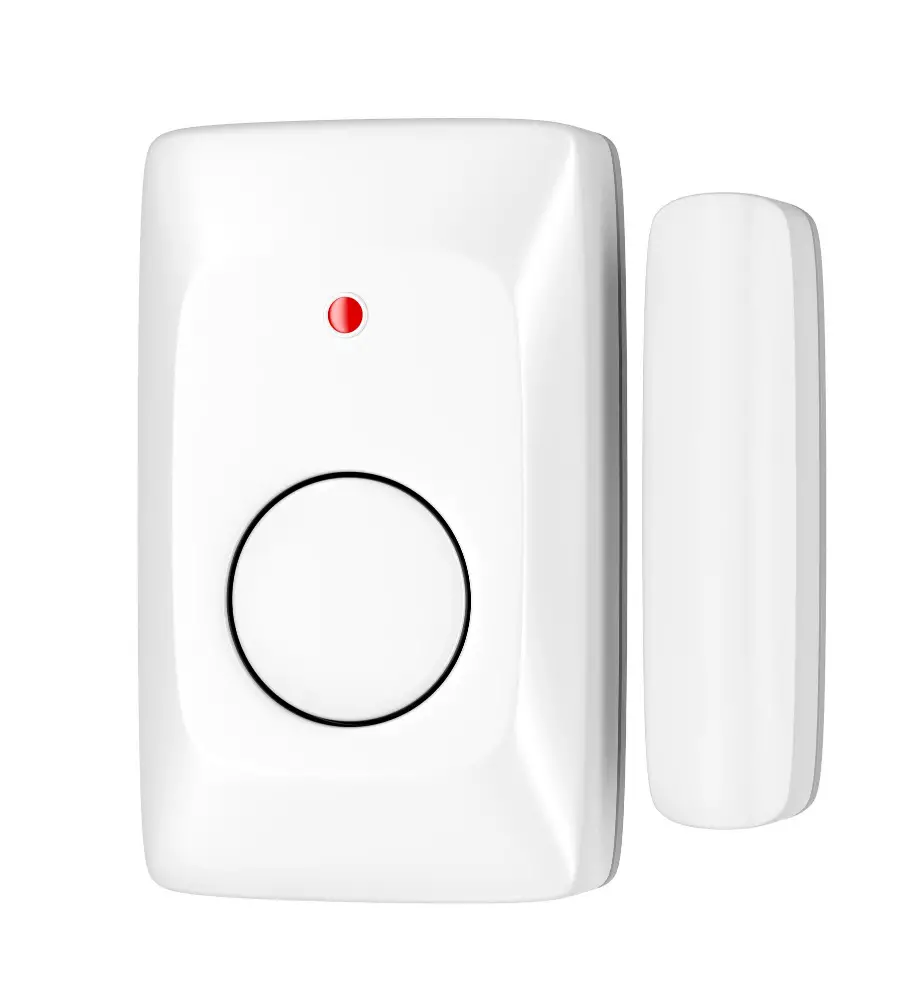
Hurricane windows, also known as impact windows, are designed to withstand strong winds and the impact of flying debris. Yet, it’s important to understand the nature of their resilience:
- They are not entirely break-proof: While they are highly resistant, an extremely strong force or repeated blows can potentially compromise them. However, they are far more secure than standard windows.
- Layered glass structure: This type of window features two layers of glass or other transparent material, with a layer of clear plastic film between. If the outer layer breaks, the inner layers help keep the window intact.
- Slower entry for intruders: Even if a potential burglar managed to crack the exterior layer, penetrating the entire window would take significant time and effort, serving as a strong deterrent.
- Consider alarms: For enhanced security, installing glass-break alarms alongside hurricane windows can provide an extra layer of protection.
Remember, while these windows significantly enhance home security, they should be part of a broader comprehensive domestic safety strategy.
FAQ
Are hurricane impact windows worth the cost?
Yes, hurricane impact windows are worth the cost as they not only provide enhanced protection against severe weather but can also lead to substantial homeowners’ insurance discounts.
Are hurricane proof windows worth it?
Hurricane proof windows are a worthy investment, as they offer both energy savings and protection against potential storm damage.
What are the negatives of impact windows?
The main drawbacks of impact windows are their high initial costs and potentially doubling the price compared to non-impact windows of the same type and size.
How much do hurricane windows reduce insurance?
Hurricane windows can potentially reduce insurance premiums by as much as 20 to 30 percent due to their capacity to protect homes from high winds and flying debris.
What factors influence the cost of hurricane windows installation?
The cost of hurricane window installation is influenced by factors such as the window size, type of glass, frame material, labor rates, and whether it’s a replacement or new installation.
How much maintenance do hurricane proof windows require?
Hurricane proof windows require minimal maintenance, which mostly includes routine cleaning and occasional seal inspections.
Can impact windows improve the overall value of a property?
Yes, impact windows can enhance the overall property value due to their durability, energy-efficient features, and ability to increase home security.
Recap
